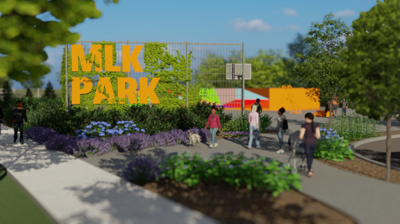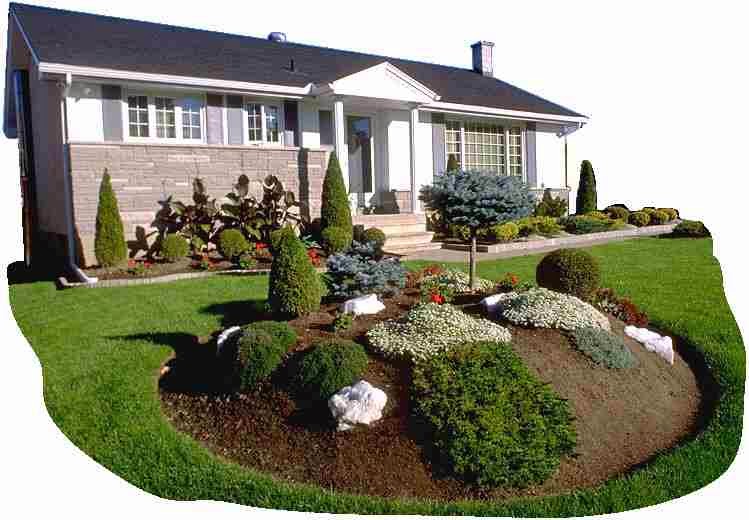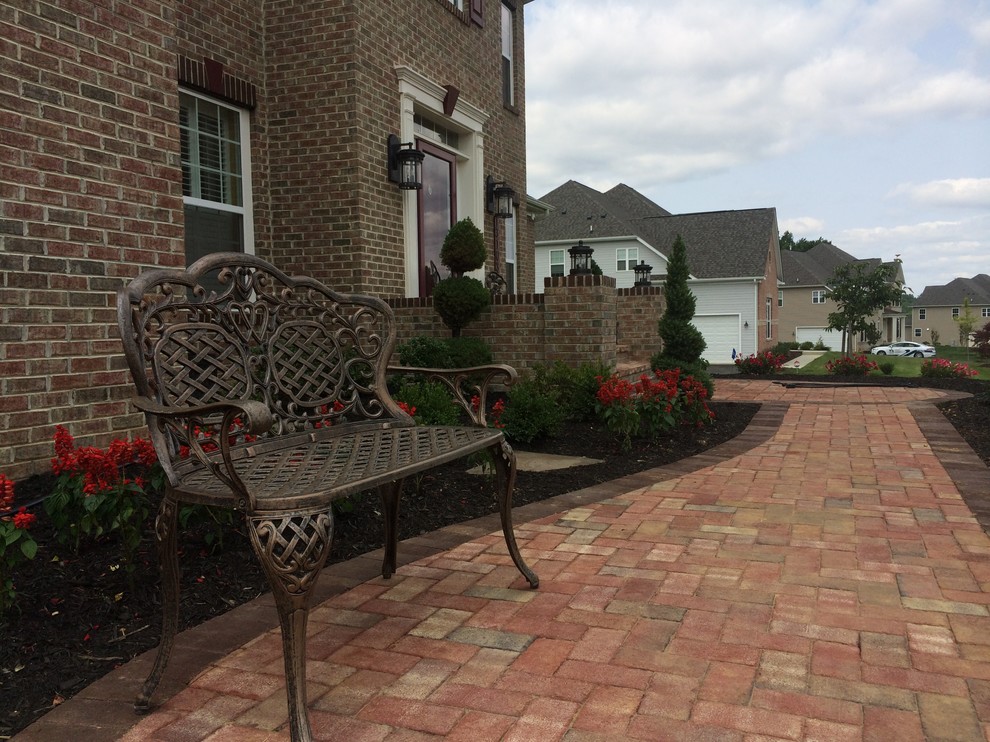How has computerized design improved landscaping? Computerized design technology has completely transformed the field of landscaping, providing numerous benefits that have revolutionized the way we approach and execute landscaping projects . With the use of advanced software and tools, landscape designers and architects are now able to create stunning and precise designs that were once only possible through manual drafting techniques. In this article, we will delve into the ways in which computerized design has improved landscaping, and provide tips on how to incorporate this technology into your own projects.

- Enhanced Efficiency and Accuracy
One of the most significant ways in which computerized design has improved landscaping is through enhanced efficiency and accuracy. With traditional methods, landscape designers had to rely on hand-drawn sketches and physical models to visualize their ideas. This process was not only time-consuming but also prone to errors and revisions. However, with computerized design, designers can now create 3D models and renderings of their designs, allowing them to accurately visualize and modify their plans in a fraction of the time it would take with traditional methods.
Moreover, computerized design tools also offer features such as automatic measurements and scaling, which ensure that the final design is accurate and to scale. This eliminates the need for manual calculations and reduces the chances of errors, resulting in more efficient and precise landscaping projects.
- Realistic Visualizations
Another significant improvement brought about by computerized design technology is the ability to create realistic visualizations of the final project. With the use of 3D modeling and rendering software, designers can now create virtual walkthroughs and flyovers of the proposed landscape, giving clients a clear understanding of how the final project will look like. This not only helps in better communication between the designer and client but also allows for any necessary changes to be made before the actual construction begins.
Furthermore, these realistic visualizations also help in making informed decisions about the placement of plants, structures, and other elements in the landscape. Designers can experiment with different options and see the results in real-time, allowing for a more efficient and visually appealing design.

- Cost-Effective Design
Computerized design has also made landscaping more cost-effective by reducing the need for multiple revisions and changes. With traditional methods, any modifications to the design would require redrawing the entire plan, resulting in additional costs and delays. However, with computerized design, designers can easily make changes and updates to the design without having to start from scratch. This not only saves time but also reduces the overall cost of the project.
Moreover, computerized design tools also allow designers to accurately estimate the cost of materials and labor, ensuring that the project stays within budget. This helps in avoiding any unexpected expenses and ensures that the client gets the best value for their investment.
- Sustainable Design
In recent years, there has been a growing emphasis on sustainable design in the field of landscaping. Computerized design technology has played a significant role in this by providing tools and features that allow designers to create environmentally friendly and sustainable landscapes. For instance, 3D modeling software can simulate the effects of sunlight and shade on the landscape, helping designers to choose the most suitable plants and trees for the site. This results in a more sustainable and eco-friendly design that requires less maintenance and resources in the long run.
Tips for Incorporating Computerized Design into Your Landscaping Projects
Now that we have explored the ways in which computerized design has improved landscaping, here are some tips for incorporating this technology into your own projects:
- Invest in Quality Software: To fully reap the benefits of computerized design, it is essential to invest in quality software that offers advanced features and tools. While there are many free or low-cost options available, they may not provide the level of precision and realism required for professional landscaping projects.
- Attend Workshops and Training Sessions: As with any new technology, it is crucial to familiarize yourself with the software and its features. Attending workshops and training sessions can help you learn how to use the tools effectively and efficiently.
- Collaborate with Clients: Involve your clients in the design process by sharing 3D models and renderings of the proposed landscape. This will not only help in better communication but also ensure that the final design meets their expectations.
- Keep Up with Updates: Software updates often include new features and improvements that can enhance your design process. Make sure to keep up with the updates to make the most out of your software.
In conclusion, computerized design technology has revolutionized the field of landscaping, making it more efficient, accurate, and visually appealing. By incorporating this technology into your projects, you can save time, reduce costs, and create sustainable and stunning landscapes that will leave a lasting impression on your clients.
1. Enhanced Planning and Visualization

How to Use: How Has Computerized Design Improved Landscaping?
With computerized design tools, landscapers can now create detailed plans and visualizations for their projects. These tools allow them to input precise measurements, choose plants and materials, and even see a 3D representation of the final result. This not only makes the planning process more efficient, but it also helps clients better understand and visualize the proposed design.
Example: Using Computerized Design for a Backyard Makeover
Lisa, a homeowner, wanted to revamp her backyard but had trouble envisioning the final result. With the help of computerized design, her landscaper was able to show her different layout options, plant placements, and even a virtual walkthrough of the space. This helped Lisa make informed decisions and feel confident about the project before any work began.
2. Increased Accuracy and Precision

How to Use: How Has Computerized Design Improved Landscaping?
Gone are the days of relying solely on hand-drawn plans and guesswork. Computerized design tools allow landscapers to input exact measurements and make precise adjustments to their designs. This ensures that the final result is as close to the initial plan as possible, reducing the margin for error.
Comparison: Hand-drawn vs. Computerized Designs
Before the advent of computerized design, landscapers had to rely on their artistic skills and manual calculations to create plans. This often led to discrepancies and mistakes, resulting in costly rework. With computerized design, these errors are minimized, making the process more efficient and cost-effective.
3. Time-saving and Cost-effective

How to Use: How Has Computerized Design Improved Landscaping?
Computerized design tools have made the planning and execution of landscaping projects faster and more cost-effective. With accurate measurements and detailed plans, landscapers can now estimate the materials needed, labor costs, and project timelines more efficiently. This helps them stay within budget and complete projects on time.
Advice: Incorporating Computerized Design into Your Landscaping Business
If you’re a landscaper looking to improve your business, incorporating computerized design is key. Investing in software and training for yourself and your team may seem daunting at first, but it will ultimately save you time and money in the long run.
FAQs about Computerized Design in Landscaping

What is computerized design in landscaping?
Computerized design refers to the use of technology, such as computer software or applications, to create detailed plans and visualizations for landscaping projects.
How does computerized design benefit landscapers?
Computerized design helps landscapers with planning, accuracy, efficiency, and cost savings. It allows them to create precise plans, visualize the final result, and estimate project costs and timelines more accurately.
Do I need special training to use computerized design in landscaping?
While some software may require specific training, many user-friendly programs are available for landscapers to use without extensive training. However, learning the basics of design principles and familiarizing yourself with the software’s features can greatly enhance your results.
Can computerized design be used for both residential and commercial landscaping projects?
Yes, computerized design can be used for both residential and commercial landscaping projects. The technology is adaptable and can cater to the needs of various clients and project sizes.
Are there any downsides to using computerized design in landscaping?
One potential downside is the initial cost and learning curve for landscaping businesses that are not yet familiar with computerized design. However, the long-term benefits far outweigh these initial challenges.
Conclusion

Computerized design has greatly improved the field of landscaping, making it more efficient, accurate, and visually appealing. From enhanced planning and visualization to increased accuracy and precision, this technology has transformed the way landscapers work. By incorporating computerized design into your landscaping business, you can save time, cut costs, and provide better services to your clients.

